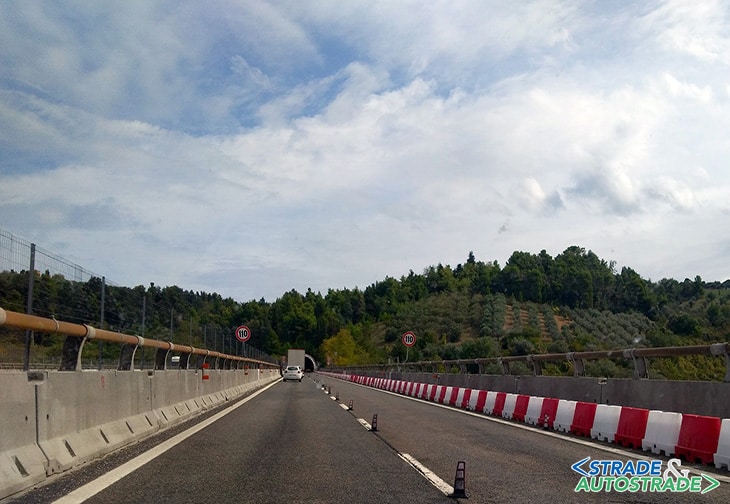The control and the assessment of the safety of existing bridges – part 1 ![]() Per la versione in Italiano: https://www.stradeeautostrade.it/ponti-e-viadotti/il-controllo-e-la-valutazione-della-sicurezza-dei-ponti-esistenti-prima-parte/
Per la versione in Italiano: https://www.stradeeautostrade.it/ponti-e-viadotti/il-controllo-e-la-valutazione-della-sicurezza-dei-ponti-esistenti-prima-parte/
Part 2 of the article, published on “S&A” n. 142 July/August 2020, is online on https://www.stradeeautostrade.it/en/infrastructures-road-network/the-control-and-the-assessment-of-the-safety-of-existing-bridges-part-2/.
The infrastructure asset in Italy
A rough estimate of the road network in Italy can refer to the picture in Figure 2.
It must be specified that the values of the bridges shown refer only to (direct) cost of construction at the end of the work, which closes the procurement phase, while the single bridge must be evaluated considering also indirect aspects such as:
- the cost at the end of its useful life, which includes both the construction cost and the costs of subsequent maintenance and which, for management purposes, is the most representative;
- the value of that bridge in the context: in fact, an interruption of the transits can entail very high costs, often higher than the material cost of the work itself; traffic is diverted to other links in the network, often inadequate to withstand increases in transit, with penalties; for some important bridges, the economic loss due to the interruption of the transits of a few months exceeds the cost of the bridge several times.
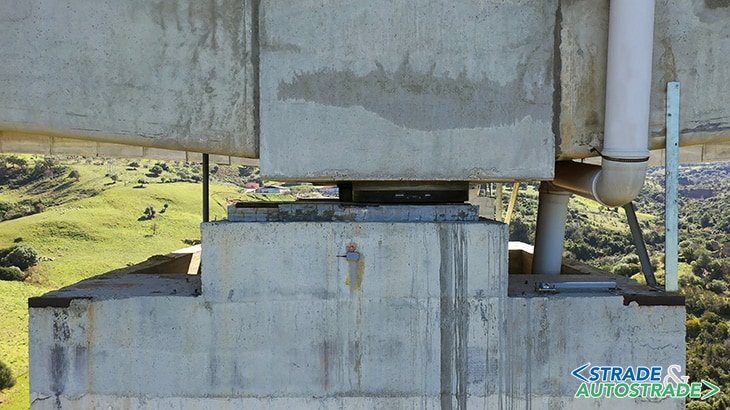
Public nature of bridges and viaducts
It should be noted that a bridge or a viaduct plays a social function immediately acquiring a public nature. In this regard, the Circular of the Ministry of Public Works n° 6736/61A1 of 07/19/67 – “Checking the stability of road works of art”, states: “The bridges are an integral part of the road and follow its legal condition.
The periodic assessment of the conditions of stability of these structures is therefore part of the road maintenance activity and it is therefore the responsibility of the Administrations, the Companies and the Bodies that are owners, Managers, or Concessionaires of the roads and highways to take full care of it.
The responsibility of these bodies arises whenever the violation of the maintenance and control obligations of the road or highway result in the user of the road injuring his right, damage, or danger for his safety.
The supervision and control of bridges are purely technical facts, however their organization must also be planned at an administrative level, due to the important legal implications that the safety of road infrastructures implies in the context of the management of public roads”.
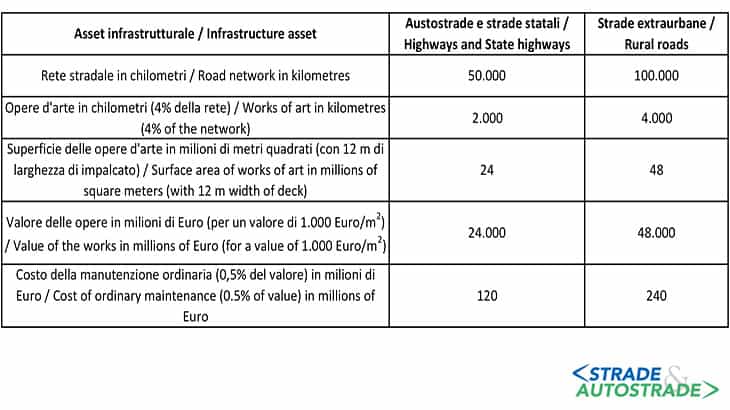
This last step clearly identifies the administrative and managerial dimension of responsibility, raising the level from the technical to the managerial level.
Maintenance of bridges and viaducts
According to UNI 13306, maintenance interventions are characterized by the combination of all the technical, administrative and management actions, during the life cycle of an entity, intended to maintain or bring it into the state of integrity in which it can perform the requested function, distinguishing between:
- ordinary maintenance: operations usually carried out in order to maintain something in efficiency and safety;
- extraordinary maintenance: specific works intended to substantially improve the quality of something.
Furthermore, UNI 11603 specifies: “Ordinary maintenance: type of maintenance interventions during the life cycle, aimed at maintaining the original integrity of the asset; maintain or restore the efficiency of the assets; contain normal degradation of use; guarantee the useful life of the asset; cope with accidental events.
Ordinary maintenance interventions do not modify the original characteristics (plate data, sizing, construction values, etc.) of the asset itself and do not modify its essential structure and their intended use”.
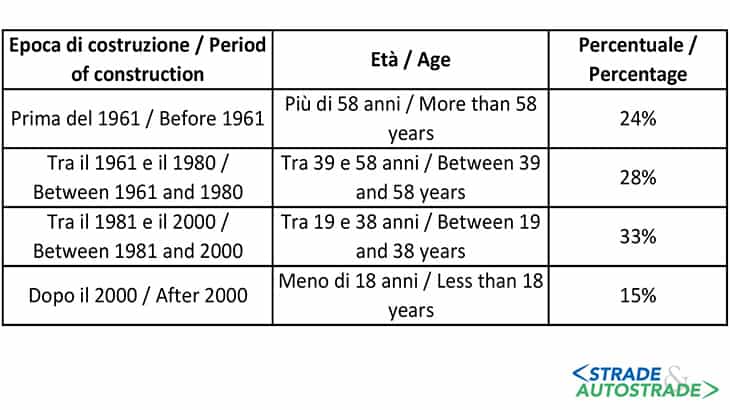
By exclusion, the scope of extraordinary maintenance can be identified. It is evident that a protracted absence – culpable or malicious – of the due ordinary maintenance entails the need for extraordinary maintenance, the costs of which cannot be pointed to unexpected and unpredictable causes.
In particular, for the support devices it can certainly be said that:
- they have a shorter useful life than that of the structure they support: their replacement is foreseen and can be classified in ordinary maintenance;
- as mechanisms, they must be periodically inspected and maintained for their correct functioning.
Peculiarities of the evaluation process of existing bridges
Regarding the age of the Italian infrastructural heritage, you can reflect on Figure 3. The importance of evaluating the structural integrity of these works is evident: structural integrity understood as the quality of a structures to have all its parts organized neatly and capable of developing its functions in order to guarantee the safety and performance expected.
It should be noted that the extrapolation of statistical concepts specific to other sectors such as industry must be carried out with extreme caution.
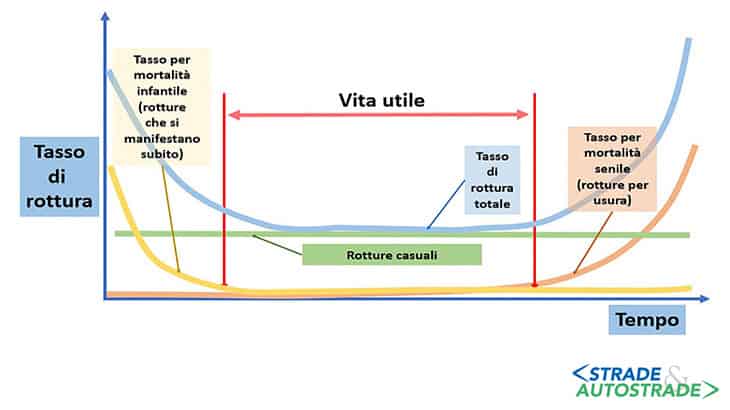
For example, Figure 4 shows a diagram used for industrial products that is only partially referable to the works of art of civil engineering since:
- this diagram refers to mass-produced objects, produced in hundreds of thousands of copies: the bridges never reach – perhaps except for prefabricated ones – these numbers and are characterized by peculiarities of inclusion in the environment;
- as seen on the age of the Italian infrastructure system, if it is true that these works have exceeded the stage of infant mortality, they are now located in the maturity or even senility phase and therefore show increasing breaking rates.
In this regard, it must be highlighted that the phenomena related to degradation, apart from the initial incubation phase, do not have a linear trend, being on the contrary linked to rapid and dramatic growth as illustrated in Figure 5.
In this sense, the observation that a structure has behaved adequately in the past can be misleading as regards its future behavior, since degradation can pose a dormant threat.
The same goes for fragile breakages, caused by fatigue and fracture-related mechanisms.
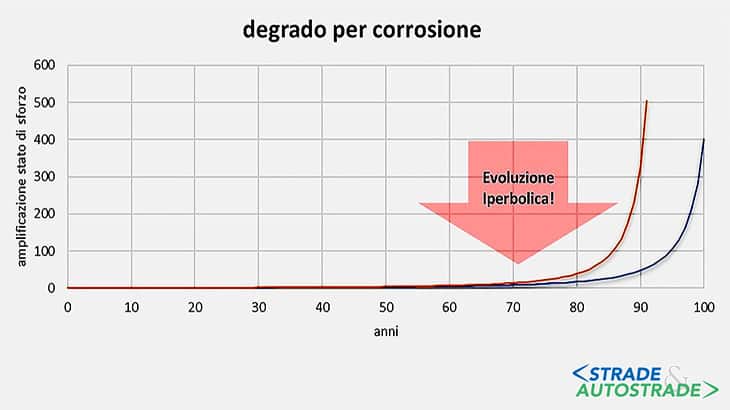
Part 2 of the article is online on https://www.stradeeautostrade.it/en/infrastructures-road-network/the-control-and-the-assessment-of-the-safety-of-existing-bridges-part-2/.
![]() Per la versione in Italiano: https://www.stradeeautostrade.it/ponti-e-viadotti/il-controllo-e-la-valutazione-della-sicurezza-dei-ponti-esistenti-prima-parte/
Per la versione in Italiano: https://www.stradeeautostrade.it/ponti-e-viadotti/il-controllo-e-la-valutazione-della-sicurezza-dei-ponti-esistenti-prima-parte/

